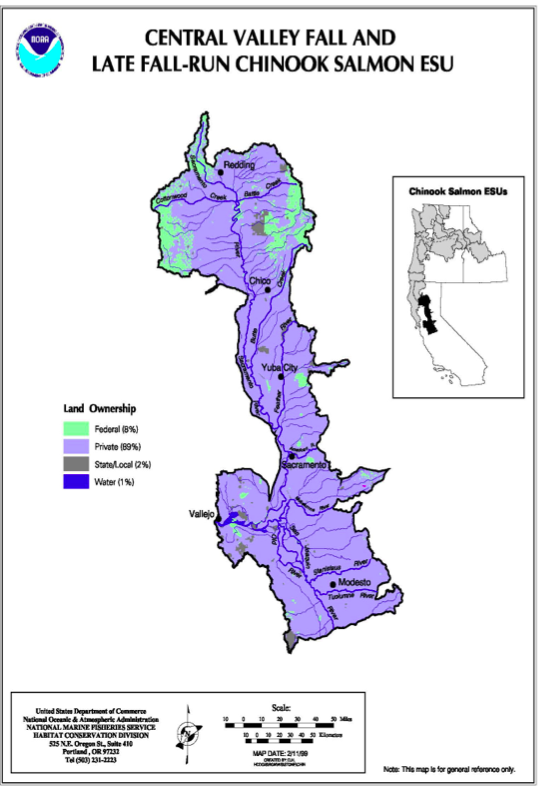MIGRATORY PATTERNS OF CHINOOK SALMON
Biology 342 Fall 2012
Tess Tumarkin & Erin McAllester
Adaptation
What is the adaptive value of migration for Chinook salmon?

Pacific Northwest National Laboratory
Chinook salmon assume a seasonal migratory pattern (see migration) regardless of whether or not they are an ocean-type or river-type Chinook Salmon. The consistency of Chinook migration patterns is especially evident in the alteration of these patterns by external forces. Such is exhibited in places like the Snake River in Idaho. The implementation of a hydroelectric system on the river has shifted the migration period of the smolts to the mid to late summer, when the normal migration period is approximately between June and July (Geist), This is problematic, because the conditions of the river are unfavorable for survival, subjecting the salmon to decreased river flow and higher temperatures which lower survival rates (Muir et al). This increased temperature of the hyporheic zone also decreases the developmental timing of the salmon, which has an inverse relationship with temperature (developmental time necessary for full growth goes down as temperature goes up) (Geist). The hatchlings hatch early, and in turn migrate early in response to internal clocks. This unfortunate example highlights the adaptive value of migration in the early summer in oppose to late summer- and how these migration patterns are ingrained in the Chinook.
Why do these Kings of salmon migrate in the first place when they seem to have perfectly suitable places to reproduce, such as secluded pebbly streams and rivers? Often times salmon will return to their natal rivers, passing up other rivers where other salmon spawn.
What drives this return to their place of birth? How do they sustain energy for extensive periods of time – enough to travel upstream to lay and fertilize eggs? Migrating salmon may pass suitable spawning waters, however the determination of these waters by the salmon as suitable for reproduction may be linked solely to internal migratory cues. In this way it seems selection has favored those that navigate to their natal origin to reproduce (Lohmann; Geomagnetics), therefore displaying the value of adaptation to cues and their homing instinct.
However probabilistic it is that a spawning salmon will travel up an inlet suitable for reproduction, it is less likely that it will be suitable without some notion of that river or stream being suitable for spawning at some point.

National Oceanic and Atmospheric Association, Chinook Salmon
The seasonality of migration may also be related to the abundance of certain food types in the oceans or estuaries, those salmon migrating at certain times of year tending to receive the most or most nutritious food. Seasonal river flow is also to be considered, as some flow rates increase the likelihood of safe passage downstream (Lichatowich). Salmon also migrate when the water is more turbid to avoid predators, which reduces the perceived risk of predation in juvenile Chinook (Gregory). These are all factors which play into the ontogenic clock cycle of Chinook salmon.